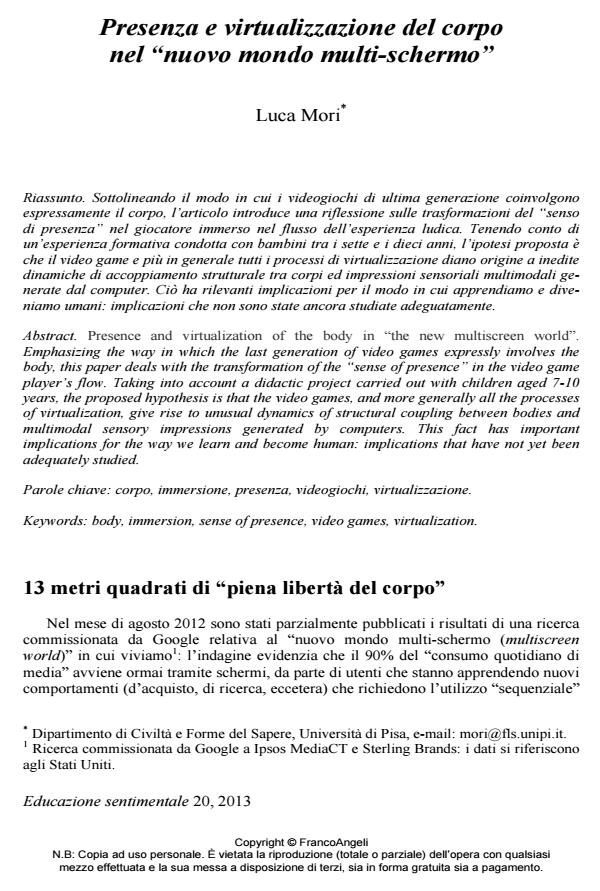Presenza e virtualizzazione del corpo nel "nuovo mondo multi-schermo"
Titolo Rivista EDUCAZIONE SENTIMENTALE
Autori/Curatori Luca Mori
Anno di pubblicazione 2013 Fascicolo 2013/20
Lingua Italiano Numero pagine 14 P. 53-66 Dimensione file 669 KB
DOI 10.3280/EDS2013-020006
Il DOI è il codice a barre della proprietà intellettuale: per saperne di più
clicca qui
Qui sotto puoi vedere in anteprima la prima pagina di questo articolo.
Se questo articolo ti interessa, lo puoi acquistare (e scaricare in formato pdf) seguendo le facili indicazioni per acquistare il download credit. Acquista Download Credits per scaricare questo Articolo in formato PDF

FrancoAngeli è membro della Publishers International Linking Association, Inc (PILA)associazione indipendente e non profit per facilitare (attraverso i servizi tecnologici implementati da CrossRef.org) l’accesso degli studiosi ai contenuti digitali nelle pubblicazioni professionali e scientifiche
Sottolineando il modo in cui i videogiochi di ultima generazione coinvolgono espressamente il corpo, l’articolo introduce una riflessione sulle trasformazioni del "senso di presenza" nel giocatore immerso nel flusso dell’esperienza ludica. Tenendo conto di un’esperienza formativa condotta con bambini tra i sette e i dieci anni, l’ipotesi proposta è che il video game e più in generale tutti i processi di virtualizzazione diano origine a inedite dinamiche di accoppiamento strutturale tra corpi ed impressioni sensoriali multimodali generate dal computer. Ciò ha rilevanti implicazioni per il modo in cui apprendiamo e diveniamo umani: implicazioni che non sono state ancora studiate adeguatamente.
Parole chiave:Corpo, immersione, presenza, videogiochi, virtualizzazione.
Luca Mori, Presenza e virtualizzazione del corpo nel "nuovo mondo multi-schermo" in "EDUCAZIONE SENTIMENTALE" 20/2013, pp 53-66, DOI: 10.3280/EDS2013-020006